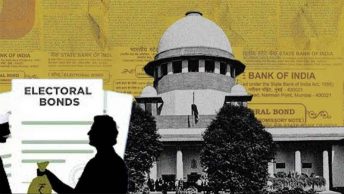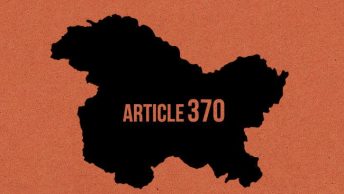Summary: In this post, our analyst, Aditi Bhojnagarwala, analyses the key provisions and judgements surrounding the Supreme Court’s recent hearings on Aligarh Muslim University’s (“AMU“) minority status. This article focuses on the jurisprudence on Article 30(1), specifically explaining the Azeez Basha case and its significance to the current proceedings. The next part of this article deals with the arguments raised by the parties before the Supreme Court.
Introduction
On 9 January 2024, a 7-judge bench of the Supreme Court started hearing the matter of Aligarh Muslim University Through its Registrar Faizan Mustafa v Naresh Agarwal. This case will determine whether the Aligarh Muslim University (“AMU“) would be considered as a Minority Educational Institution (“MEI“).
What is a Minority Educational Institution?
Article 30(1) of the Constitution bestows minorities with the “right to establish and administer educational institutions of their choice”. Section 2(g) of the National Commission for Minority Educational Institution Act, 2004 defines a MEI as “a college or an educational institution established and administered by a minority or minorities”.
In State of Kerala v Mother Provincial (“Mother Provincial“), the term ‘administer’ in Article 30(1) was defined as the management of affairs of an institution. However, this did not extend to setting educational standards, where the government was permitted to interfere. It was further clarified that even an institution established by a philanthropic individual of a minority community would be a MEI as long as the institution was set up for the benefit of that community. The mere fact that members of other communities are also permitted to benefit from these institutions would not strip it of its MEI status. However, as per AP Christian Medical Association v State of Andhra Pradesh, the institution must prove that a considerable portion of the minority community is benefitted by it for governments to recognize and confirm that it satisfies the requirements to be considered a MEI.
Additionally, in Yogendra Nath Singh v State of Uttar Pradesh it was held that the requirements of establishment and administration under the Act were conjunctive in nature. Hence, if an institution was not established by a minority, then it could not receive the status of a MEI even if it was currently being administered by a minority.
In 1981, the question of the required indicia for treating an educational institution as a MEI was referred to a 7-judge bench by the order in Anjuman-e-Rahmania Vs. District Inspector of School. This was subsequently heard by an 11-judge bench in TMA Pai Foundation vs State of Karnataka (“TMA Pai case“). While the court held that the minority status of a community would be determined by their demographic strength at the state level, the specific question regarding the requirements for treating an educational institution was not decided, stating that a regular bench must instead take up the same. However, the regular bench also failed to answer this question, due to which the issue remained inconclusive. The case that specifically concerned AMU’s status which forms the bedrock of the current proceedings is the Azeez Basha case, decided in 1967.
The Azeez Basha case
The contention behind the minority status of AMU was first addressed by the Supreme Court in the Azeez Basha case, where the petitioners challenged the constitutionality of the 1951 and 1965 amendments to the Aligarh Muslim University Act, 1920 (“AMU Act“)
The 1951 amendment altered Section 8 of the AMU Act, thereby opening up the University “to persons of either sex and of whatever race, creed, caste, or class” and removing restrictions on religious beliefs as a criterion for admission. It also deleted Section 9, which provided compulsory religious instruction for Muslim students. In 1965, Section 23(2) and 23(3) were removed, relieving the Court of its authority as the supreme body governing AMU, while the powers of other bodies such as the Executive Council were exponentially widened. The petitioners contended that such amendments violated Article 30(1) and Articles 25, 26(a), 29 and 31.
The key question underlying these challenges was whether AMU was a MEI, and consequently, if it was “established and administered” by Muslims, as required under Section 2(g) of the Act. Drawing from the history of AMU, the Petitioners noted that, the Mohammedan Anglo-Oriental College (“MAO“) was set up by Sir Syed Ahmed Khan, to impart liberal scientific education alongside traditional religious teachings for the Muslim community in the 1870s. After his death, the prospect of establishing a Muslim University gathered strength within the community, and culminated in the AMU Act, 1920 that established the university.
Funding for AMU primarily was provided by the Muslim community. Additionally, the MAO College was dissolved and its properties and rights were transferred to AMU. The AMU Act further notes that it is an “Act to establish and incorporate a teaching Muslim University at Aligarh“. Through this, inter alia, the petitioners aimed to prove that AMU was established by Muslims and ought to be considered a MEI.
However, the Respondents argued that AMU was established by the AMU Act, a statute passed in the Parliament, and not by the Muslim community. They stated that at the time when the University was established, private individuals were allowed to establish universities. Hence, there was no need to approach the government to establish AMU through a legislative act. However, the same was done because the Muslim community wanted the degrees of graduates from AMU to be recognized by the government. Having taken such a decision to let the government establish AMU, the Muslims could not now claim a right to administer it under Article 30(1).
The Court agreed with the submissions of the Respondent. It held that AMU was not established privately but was set up through a statute. Consequently, AMU could not be deemed as being ‘established’ by minorities, and hence would not be a MEI. Therefore, the amendments made to the AMU Act were upheld as valid.
Developments post Azeez Basha
The Azeez Basha case had led to increasing demands for the restoration of AMU’s MEI status. To assuage such concerns, the AMU Act was amended in 1981 to clarify the history and purpose behind establishing the institution, intending to overturn the Azeez Basha judgment. In Section 2(l), ‘University’ was re-defined to emphasize that AMU was established by the Muslim community and originated from MAO. Moreover, a special emphasis on the advancement of Muslims was placed through the insertion of Section 5(5) to the AMU Act. The key concern arising out of such amendments was whether such legislation could override the Supreme Court’s Azeez Basha judgment.
In NHPC Ltd. v. State of Himachal Pradesh Secretary, the Supreme Court has reiterated that although the legislature could not directly set aside a judicial decision, it could alter the law to remove the very foundation on which a judgment was grounded. Furthermore, the defect of the previous law could be removed both prospectively and retrospectively by the legislative process. A major point of contention in the current case is whether the validity of the Amendment Act of 1981 should be considered in the ongoing proceedings to determine the status of AMU.
The controversy surrounding the minority status of AMU resurfaced in 2005, when the University reserved 50% of post-graduate medical seats for Muslim candidates. The reservations were challenged in Dr. Naresh Agarwal v. Union Of India. In deciding the case, the Allahabad High Court restated the ruling in Azeez Basha, and held that the apex court, after considering the history and background of AMU, had established the status of the university. In the absence of substantial changes in the circumstances surrounding AMU, it held that a legislation could not override the decision of the Supreme Court, and granted a stay on the reservations. This judgement of the High Court has now been challenged in the Supreme Court. The hearings were concluded on 1 February 1 2024, and the judgment has been reserved.
Aditi Bhojnagarwala is a second-year student at NALSAR University of Law, Hyderabad. This explainer has been written as part of LAOT’s Analyst Program, 2024.
[Ed Note: This Article has been edited by Saranya Ravindran and published by Harshitha Adari from the Student Editorial Team.]








cth8v8